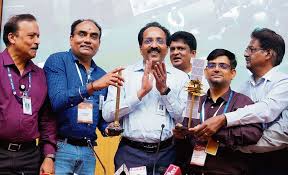NEW DELHI: The Indian Space Research Organisation (ISRO) successfully launched the Earth Observation Satellite (EOS-08) aboard the Small Satellite Launch Vehicle (SSLV-D3) from the Satish Dhawan Space Centre in Sriharikota on Friday.
The mission marks the culmination of the SSLV development phase, paving the way for future commercial missions by Indian industry and NewSpace India Limited (NSIL). The SSLV-D3 mission, initially scheduled for August 15 but postponed by a day, is a significant step forward in ISRO’s efforts to provide low-cost access to space.
Approximately 17 minutes after the lift off at 9.17 pm, the EOS-08 satellite, along with the SR-0 DEMOSAT, was successfully placed into a 475 km circular orbit above Earth.
With the successful completion of the SSLV development project, ISRO and Indian private players will be in a position to meet the growing global demand for launching mini, micro, and nano-satellites.
The EOS-08, weighing around 175.5 kg, is designed to demonstrate new technologies and payload instruments compatible with microsatellite buses. Built on ISRO’s Microsat/IMS-1 bus, it carries three advanced payloads: the Electro Optical Infrared Payload (EOIR), the Global Navigation Satellite System-Reflectometry payload (GNSS-R), and the SiC UV Dosimeter. The EOIR payload will capture images in both the Mid-Wave and Long-Wave infrared bands, enabling it to function effectively during day and night.
Aim to launch Gaganyaan mission by Dec: ISRO chief
ISRO has targeted to launch the first mission of the ambitious Gaganyaan project by December, a top official said here on Friday. Currently, some of the rocket hardware for the human space programme has reached the Satish Dhawan Space Centre here and the integration of the crew module was going on at the Vikram Sarabhai Space Centre, Trivandrum, ISRO Chairman S Somanath said.


